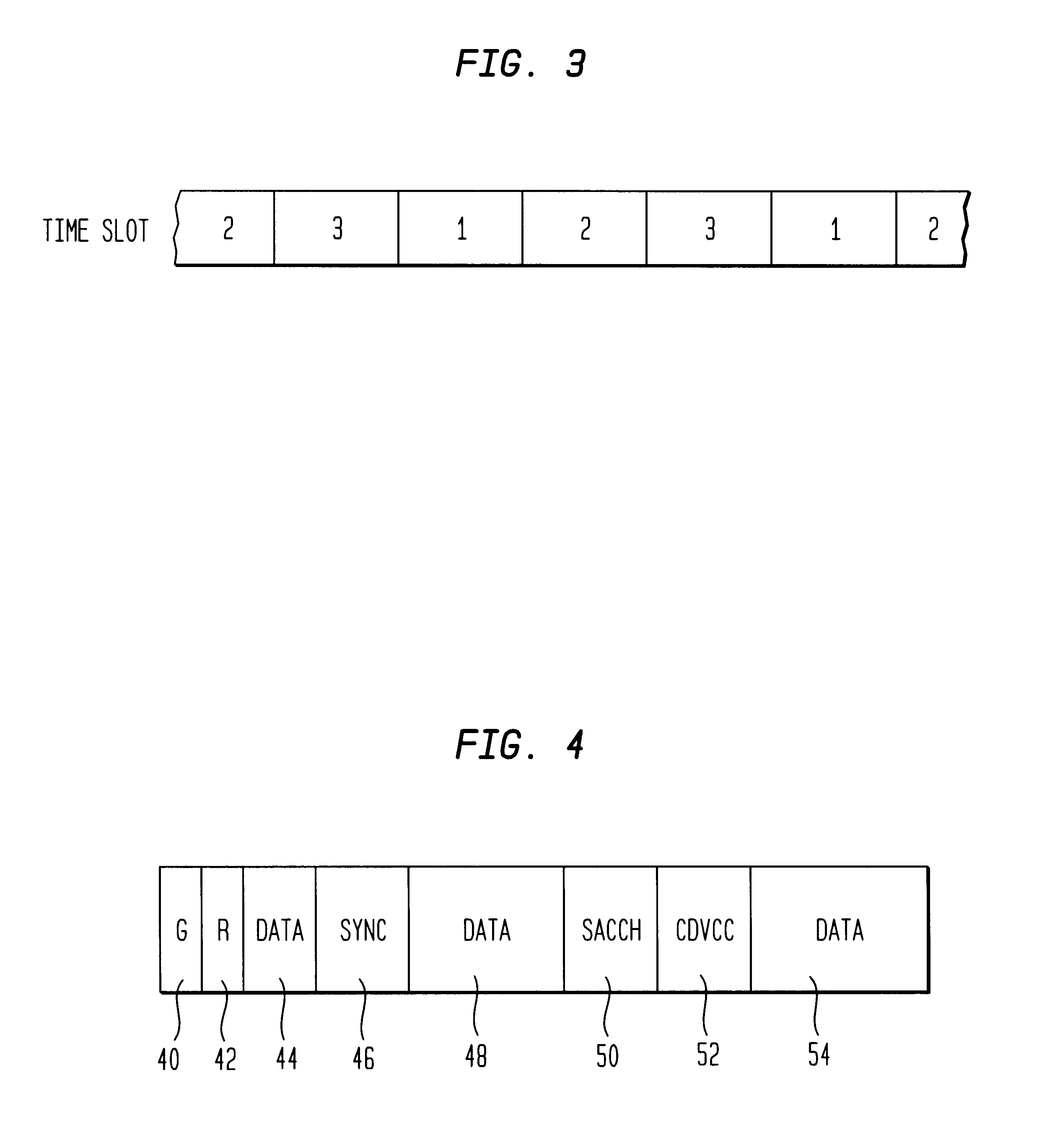Method to dynamically determine interference and carrier-to-interference ration during TDMA calls
- Summary
- Abstract
- Description
- Claims
- Application Information
AI Technical Summary
Benefits of technology
Problems solved by technology
Method used
Image
Examples
first embodiment
interference levels are determined on an active channel while a mobile station assigned to the channel transmits in discontinuous transmission (DTX) mode. Discontinuous transmission is used in order to save battery life in mobile stations, and to reduce interference levels in the wireless environment. In many conversations, it is typical for moments of silence to occur. Accordingly, many voice messages transmitted during a TDMA call carry data representative of silence. These transmissions waste battery power, increase interference in the wireless environment, and convey no useful information. The discontinuous transmission technique reduces these disadvantages by shutting off transmission during a specified period of an active time slot associated with silence.
FIG. 5 illustrates a format of a time slot in DTX mode. It will be understood that the format of the time slot illustrated in FIG. 5 is merely an example of a DTX time slot, and the present invention is not limited to a parti...
PUM
 Login to View More
Login to View More Abstract
Description
Claims
Application Information
 Login to View More
Login to View More - R&D
- Intellectual Property
- Life Sciences
- Materials
- Tech Scout
- Unparalleled Data Quality
- Higher Quality Content
- 60% Fewer Hallucinations
Browse by: Latest US Patents, China's latest patents, Technical Efficacy Thesaurus, Application Domain, Technology Topic, Popular Technical Reports.
© 2025 PatSnap. All rights reserved.Legal|Privacy policy|Modern Slavery Act Transparency Statement|Sitemap|About US| Contact US: help@patsnap.com



